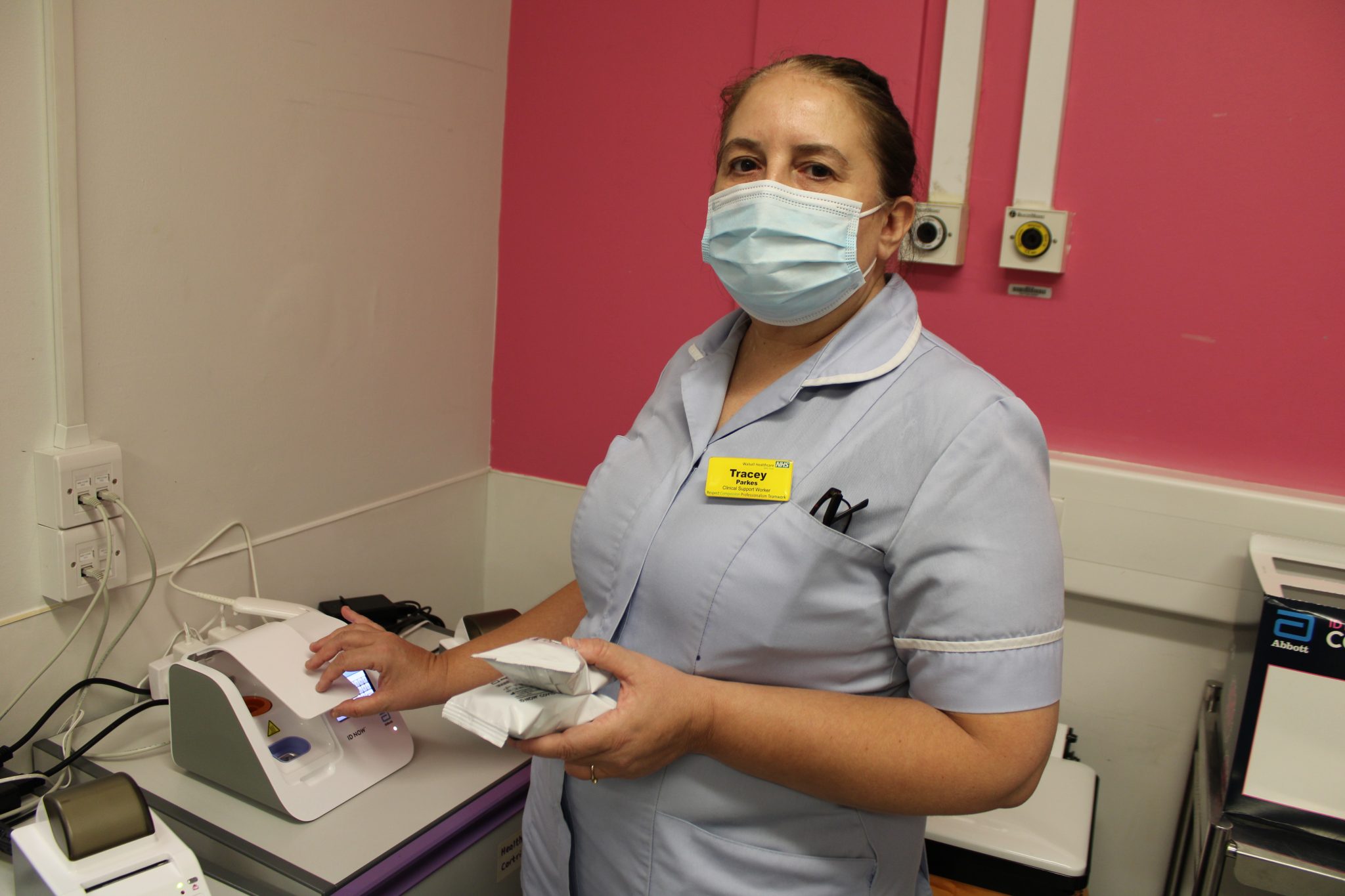Waiting times for test results for viruses – including COVID-19 – have been cut by an hour and a half thanks to new technology at Walsall Manor Hospital.
Results are available on the Abbott ID NOW point of care device within 10 minutes, whereas using the previous device they took 100 minutes.
This means patients can be streamed more quickly and effectively and should reduce any risk of transmission of infection within the inpatient setting.
In addition, the ability to test for more respiratory viruses means patients will be diagnosed effectively.
The testing is used on patients who arrive at the Emergency Department (ED) and help ensure the safety of patients and staff.
The ID NOW device, which is just as sensitive as the previous device can test for COVID-19, flu and respiratory syncytial virus (RSV), a common virus that usually causes mild, cold-like symptoms.
Clinical Director of Clinical Support Services Dr Aiden Plant said: “The new testing platforms will provide the department and hospital with the ability to rapidly and confidently diagnose patients with crucial viral infection of the respiratory tract, including COVID-19.
“This will ensure they receive the most appropriate care, and in a safe setting which avoids any risk to other patients.”
Point of care testing means conducting a diagnostic test at (or near) the patient’s bedside.
This technology has been around for many years, for example urine dipsticks, urine pregnancy tests, blood glucose machines and blood gas analysers.
Walsall Healthcare first introduced a point of care test to diagnose flu in ED in winter 2018 to aid patient treatment and flow.
After the COVID-19 pandemic started, new point of care technology was installed in ED to diagnose the virus within an hour and a half, which has now been replaced by the ID NOW.
The simple test involves taking a swab from the patient, which is tested by polymerase chain reaction (PCR) – the ‘gold standard’ diagnostic test for viral infections of the upper respiratory infection.
It looks for small segments of genetic material specific to the infecting organism, and using cycles of heating and cooling, copies the segment of genetic material into the billions/trillions. At this point the analyser will detect the virus, and issues a result.
Additional devices will soon be introduced in other areas where patients are admitted to hospital – paediatrics, surgical assessment unit and obstetrics.
The devices will also be integrated into Trust IT systems, meaning results will appear almost instantly after the test finishes.

